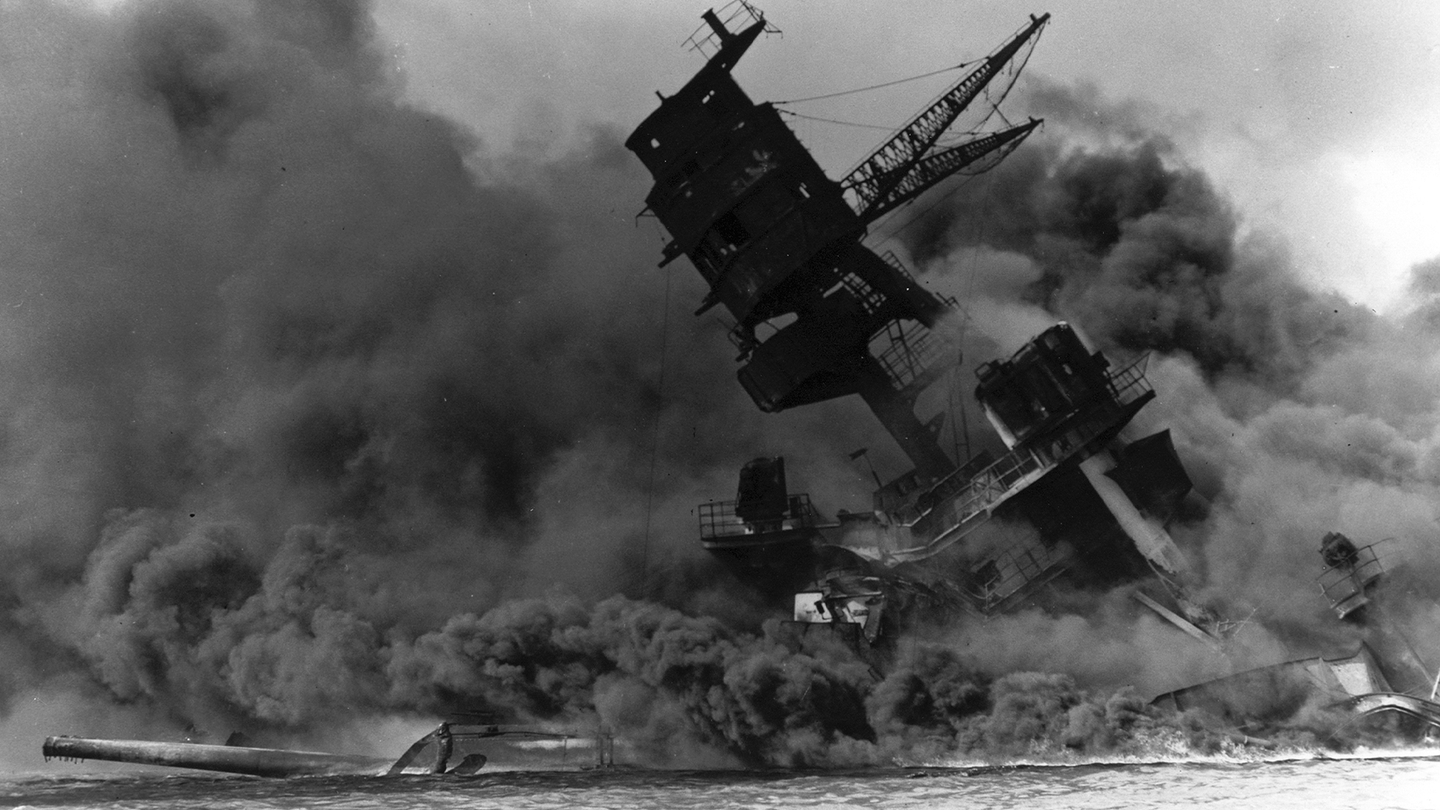Pearl Harbor dataset holds clues to how WWII may have shaped weather data
A new dataset contains more than 3 million individual weather observations, as well as logs from vessels bombed at Pearl Harbor.

A team of scientists and volunteers from the University of Reading in England recovered and digitized weather data from several ships that were bombed during the attack on Pearl Harbor in World War II. This nearly century-old data is offering clues how the war changed daily weather observations at the time.
When the US naval base was attacked on December 7, 1941 by Japanese military forces, over 100 vessels were stationed there. During the initial attack, the USS Arizona and USS Oklahoma sank and the USS Nevada beached after being hit by a torpedo and at least six bombs. Most of the remaining vessels from the fleet eventually returned to service and the crew members resumed recording weather data among their other daily duties.
[Related: The Rise Of The Tank Before World War II.]
The paper published September 18 in the Geoscience Data Journal describes how weather data from WWII was recovered from 19 United States Navy ships. Some earlier research has suggested these years were abnormally warm, and this new dataset of over 630,000 records with more than 3 million individual observations, is helping piece together the mystery referred to as the WWII warm anomaly.
These newly recovered datasets show how wartime created changes in observation practices, including taking more of them during the day rather than at night to avoid being detected by enemy ships. Due to this shift in when the measurements were taken, the team believes that collecting weather data only during daylight hours may have led to the slightly warmer temperatures recorded during the war. Future studies with this newly digitized data will help resolve if the weather truly was warmer during 1941 to 1945 and fill in gaps that will help scientists better understand how the global climate has evolved since the 1940s.
“Disruptions to trade routes in World War II led to a significant reduction in marine weather observations,” University of Reading meteorological research scientist and study co-author Praveen Teleti said in a statement. “Until recently, records from that time were still only available in classified paper documents. The scanning and rescuing of this data provides a window into the past, allowing us to understand how the world’s climate was behaving during a time of tremendous upheaval.“
In the study, the team used recovered logbooks from 19 different vessels, including battleships, aircraft carriers, destroyers, and cruisers. Many of these ships were present during the attack in December 1941 that killed 2,404 US military servicemembers and civilians, along with 64 Japanese servicemembers. All of the ships in this study saw some combat in the Pacific at some point during the war. The USS Pennsylvania remained in service after being hit during the attack, when one bomb fell on the battleship killing nine servicemembers. The USS Tennessee was bombed twice in December 1941, killing five servicemembers. The 32,300-ton battleship returned to service in February 1942.
[Related: Severe droughts are bringing archaeological wonders and historic horrors to the surface.]
Additionally, over 4,000 volunteers transcribed more than 29,000 logbook images from the fleet stationed in Hawaii from 1941 through 1945 to generate the dataset.
“There are two sets of people we need to thank for making this mission a success. We are very grateful to the global team of citizen scientists for transcribing these observations and creating a huge dataset that includes millions of entries about air and sea surface temperatures, atmospheric pressure, wind speed, and wind direction,” said Teleti. “The greatest respect must go to the brave servicemen who recorded this data. War was all around them, but they still did their jobs with such professionalism. It is thanks to their dedication and determination that we have these observations 80 years on.”
